Goshinkosai (Great Summer Festival)
Date: July 31st – August 2nd
The Goshinkosai is a major summer festival and the most popular event that takes place at Usa Jingu Shrine. It was originally a purification rite in the Heian period (794–1185), and now the tradition of summer purification is combined with a ceremonial visit by the deities to the nearby community. In addition to ritual activities and the lively mikoshi (portable shrine) parade, the celebration includes traditional music and dance performances, as well as various market stalls with food, drinks, and games.
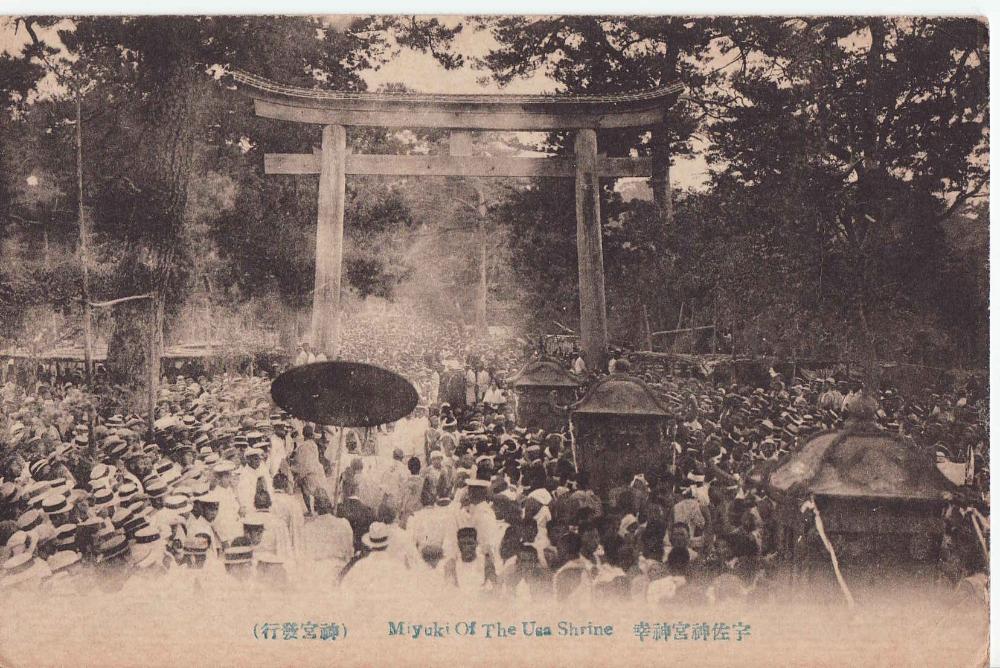
Goshinkosai festival in the early twentieth century
July 31: Departing Procession
On the first day, the deities of Usa Jingu (Hachiman, the Hime Okami, and Empress Jingu) are ceremonially transferred from the sanctuaries at the Jogu (Upper Shrine) to three mikoshi and depart toward the Tongu, a temporary enshrinement site, accompanied by a procession of about 250 participants. A parishioner portraying Sarutahiko, the deity of guidance, leads the way, followed by musicians, children dressed in colorful costumes, community representatives in traditional formal clothing, and the priests of Usa Jingu.
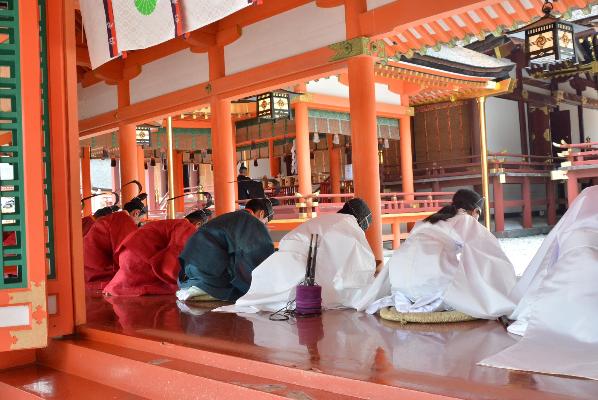
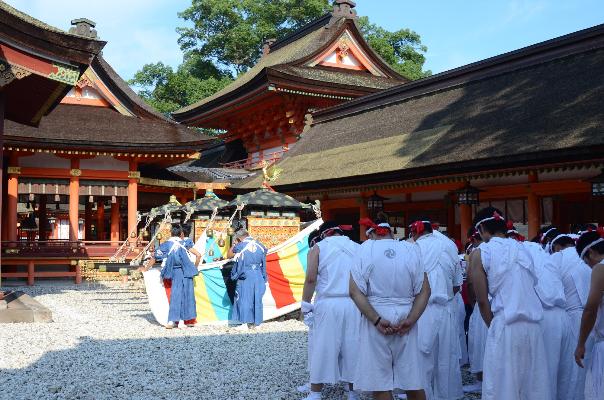
Rituals at the main sanctuary of Usa Jingu Shrine
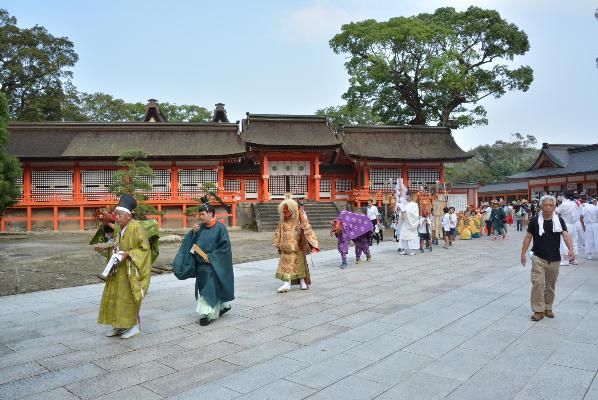
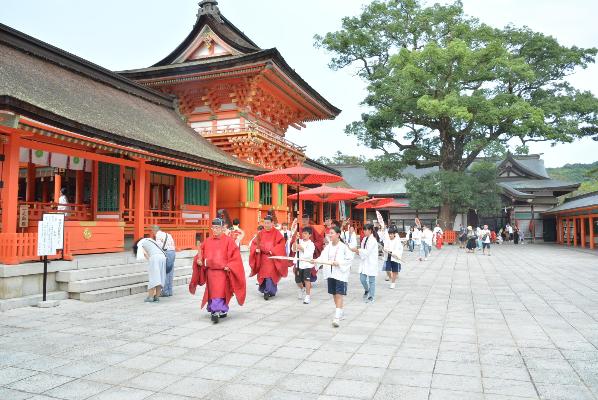
Festival procession at the Jogu (Upper Shrine)
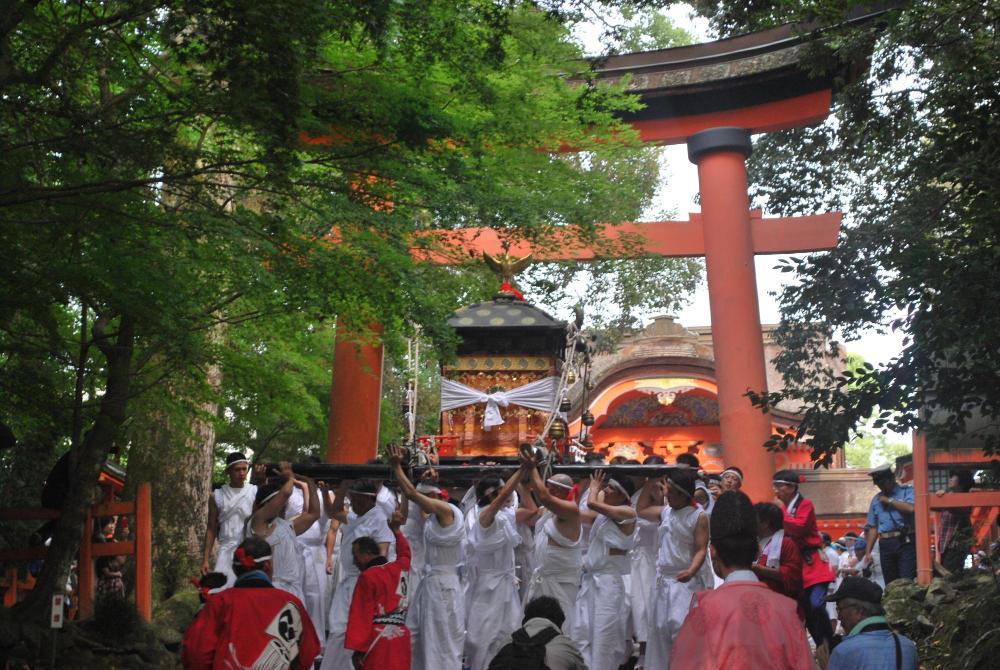
Hachiman portable shrine departing from the Jogu
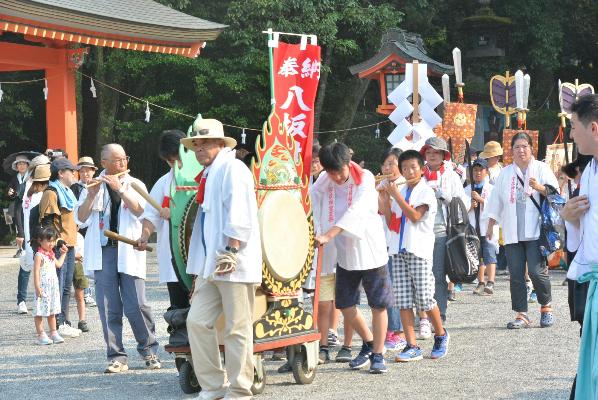
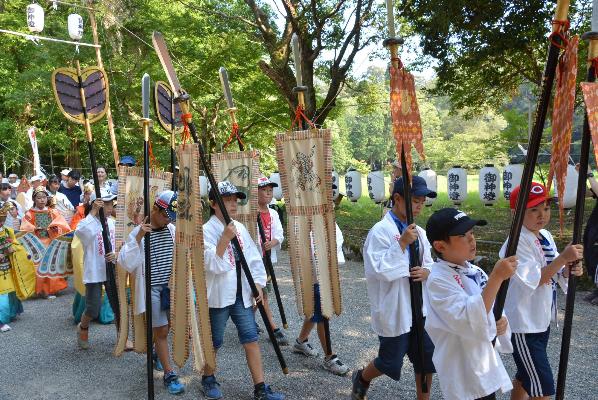
Musicians and children participating in the procession
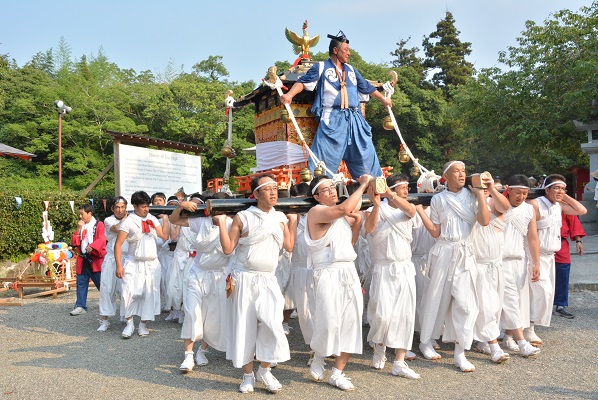
A shrine carpenter riding on a portable shrine
The mikoshi bearers descend the stairs to the large open space near the Haraedo platform, where they rotate their mikoshi three times and raise it high into the air. From this point on, a shrine carpenter rides on the supporting poles of each portable shrine. This tradition remains from the custom of “battling” to determine the order of the procession, which sometimes warranted mid-festival repairs. The parade crosses the river to visit Nakamise Shopping Street before heading to the Tongu. The ancient Suganuki purification rite takes place once the mikoshi arrive, and the deities are transferred to the Tongu sanctuary to remain there for three days and two nights.
August 1: Yabusame Horseback Archery Ritual
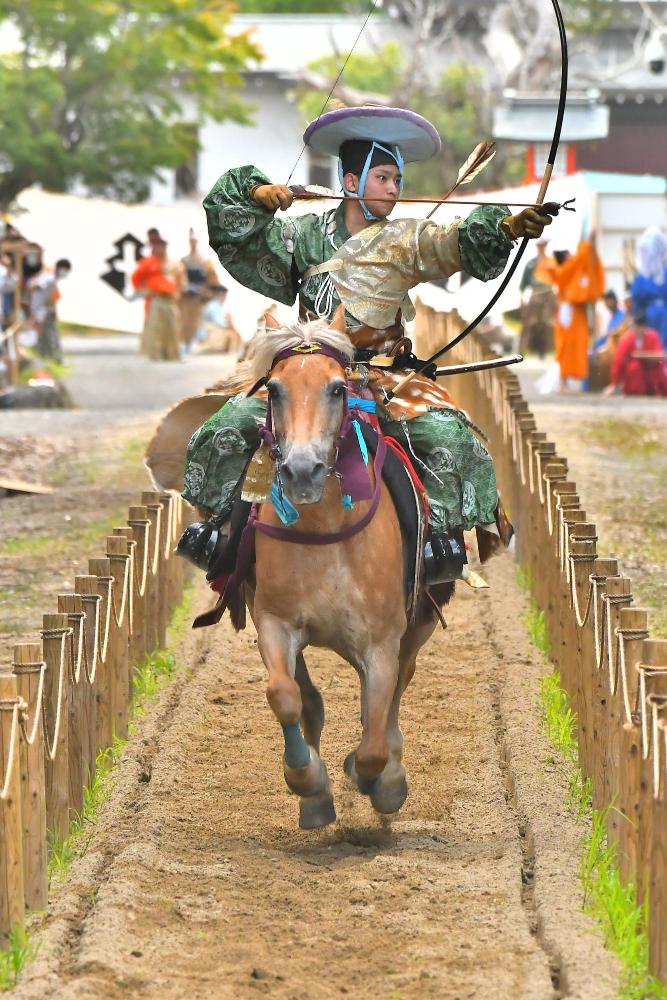
In the afternoon of the second day, the path near the Tongu that leads to O’o Jinja Shrine is used for a yabusame horseback archery ritual that was introduced as part of the festival in 2019. It is performed by representatives of the Ogasawara school of mounted archery, which has a history of about 850 years. Trained riders dressed as warriors of the Kamakura period (1185–1333) gallop along the 270-meter-long lane, shooting arrows at three targets as an offering to the deities.
On the same day, the deities of Wakamiya Jinja Shrine are carried through the grounds of Usa Jingu and to Nakamise Shopping Street in a smaller-scale ceremonial visit.
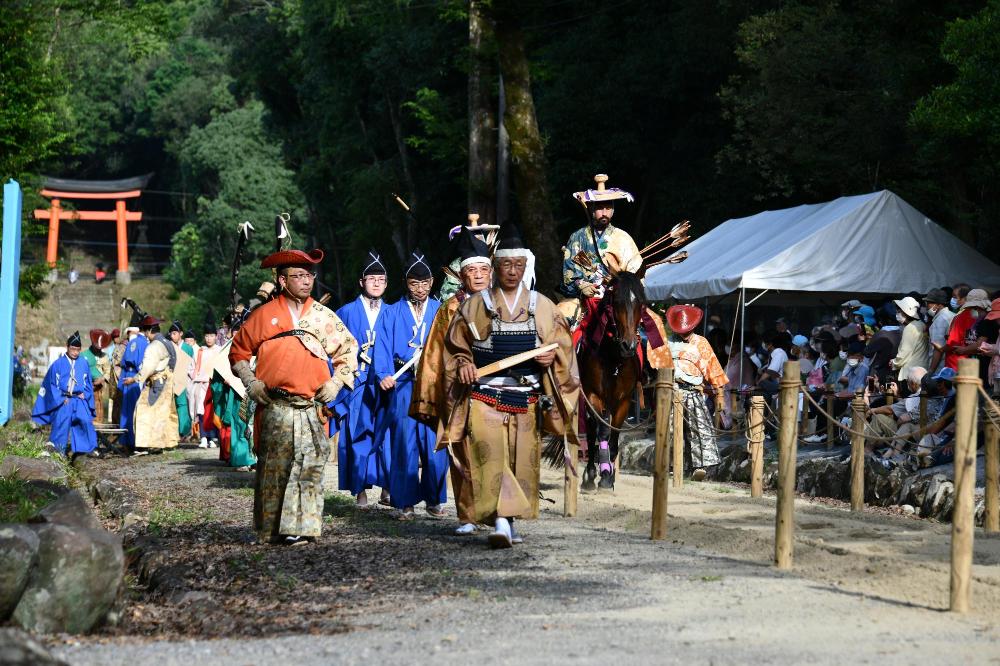
Yabusame horseback archery ritual
August 2: Returning Procession
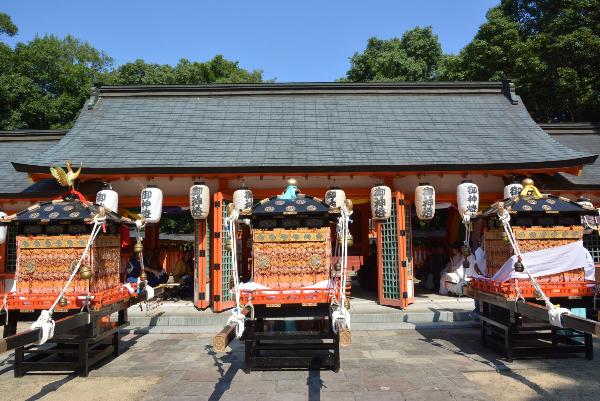
Portable shrines ready to depart from the Tongu
In the evening of the last day, the three portable shrines are returned to the Jogu, retracing the route of the first festival day and accompanied by the same procession. The deities are transferred back to the sanctuaries, and a prayer ritual follows. The Goshinkosai ends with a special fireworks display that serves as a rite to ward off disease and misfortune.
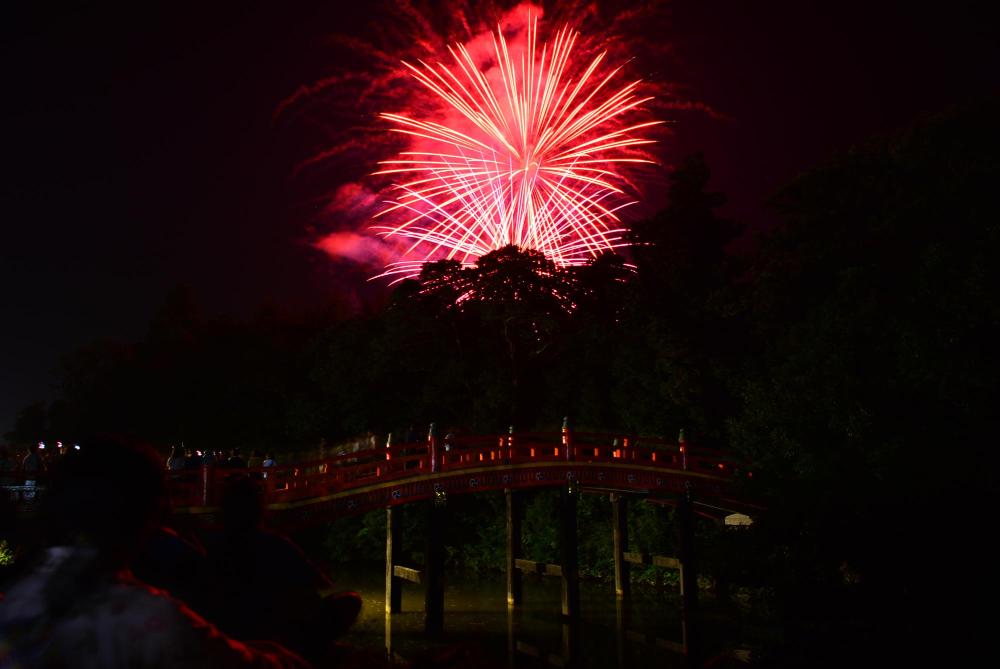
Fireworks display to ward off misfortune
Goshinkosai Then and Now: Faithfully Preserving Tradition

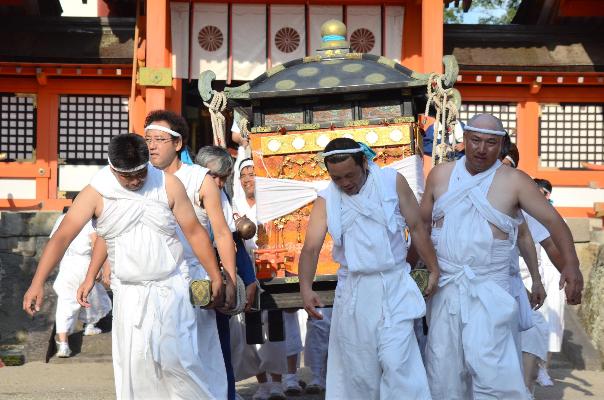
A portable shrine departing from the main sanctuary

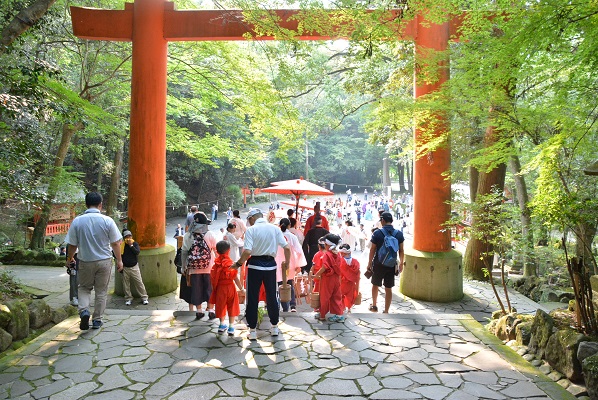
Children helping carry ceremonial wooden buckets


Children dressed as shishi lion dancers
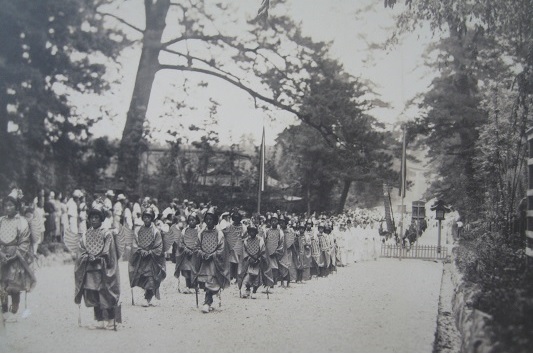
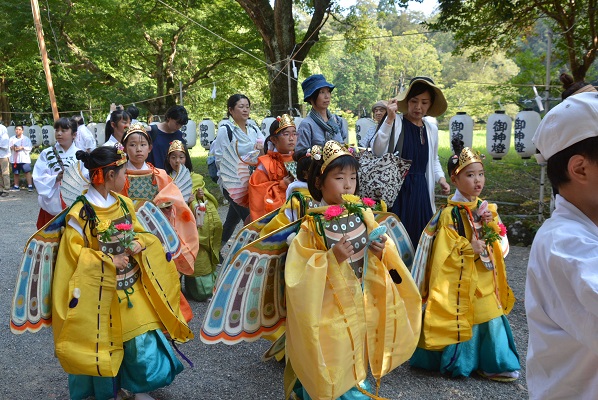
Children in ornate costumes
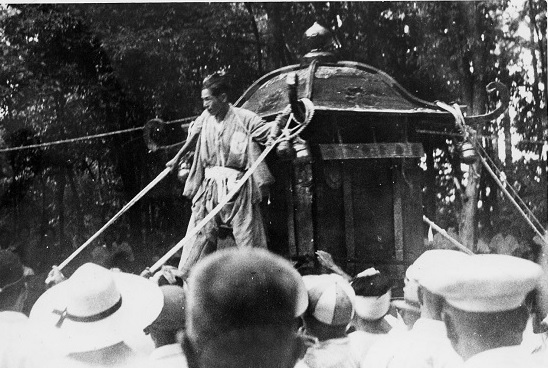
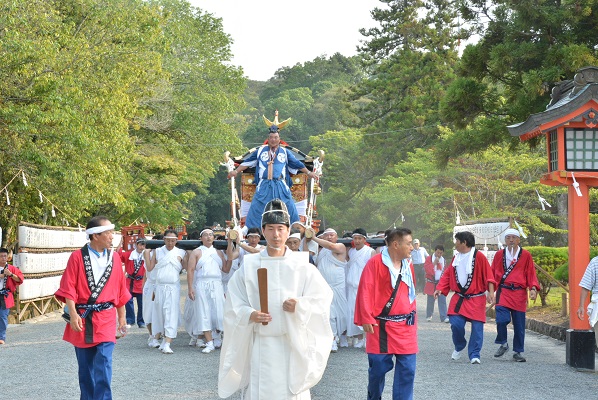
Shrine carpenters riding on a portable shrine
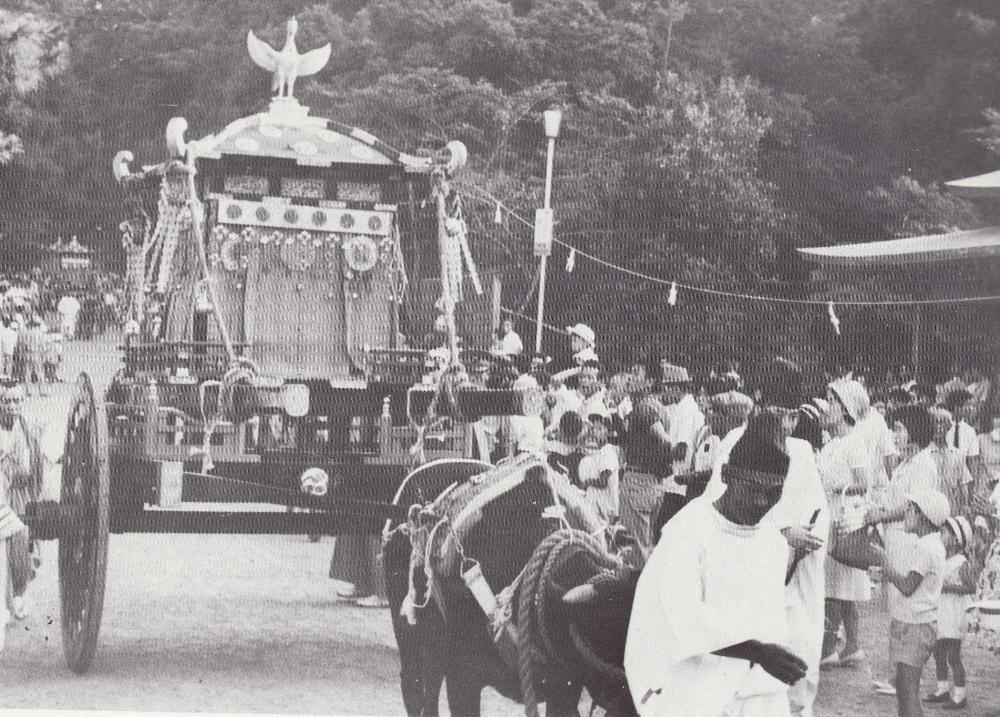
A portable shrine transported by ox cart (post-WWII)
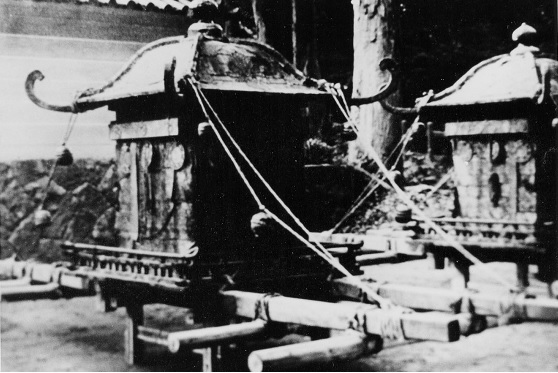
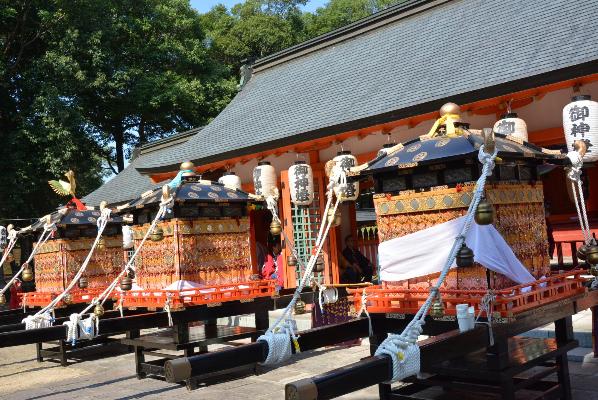
Portable shrines from the fourteenth century (now preserved in the Treasure Hall) and the portable shrines from 1941 currently in use

This English-language text was created by Japan Tourism Agency.







更新日:2024年03月18日